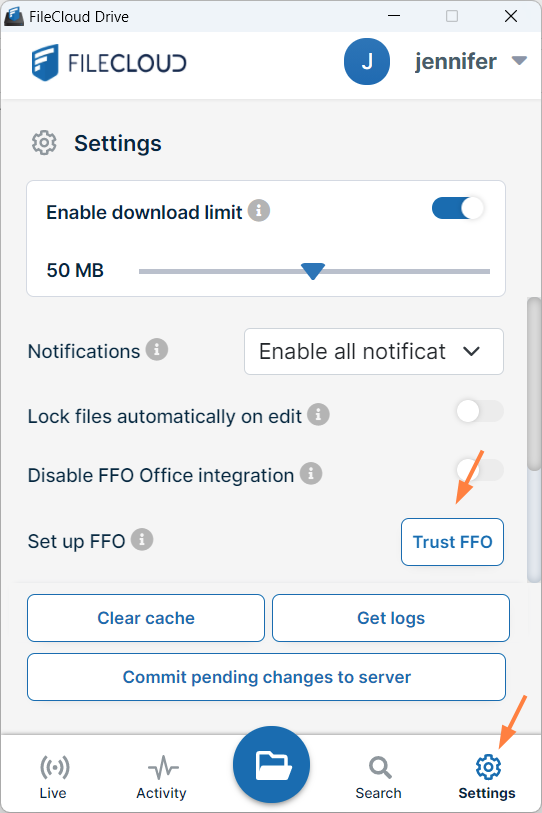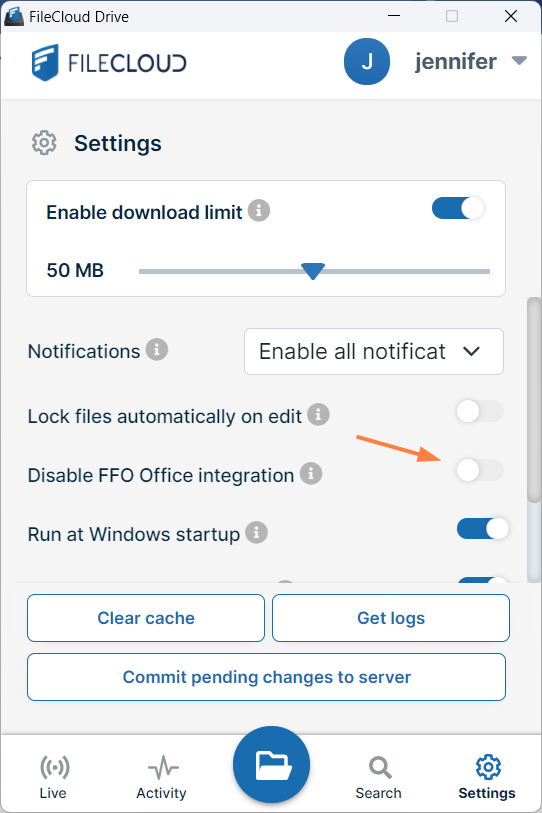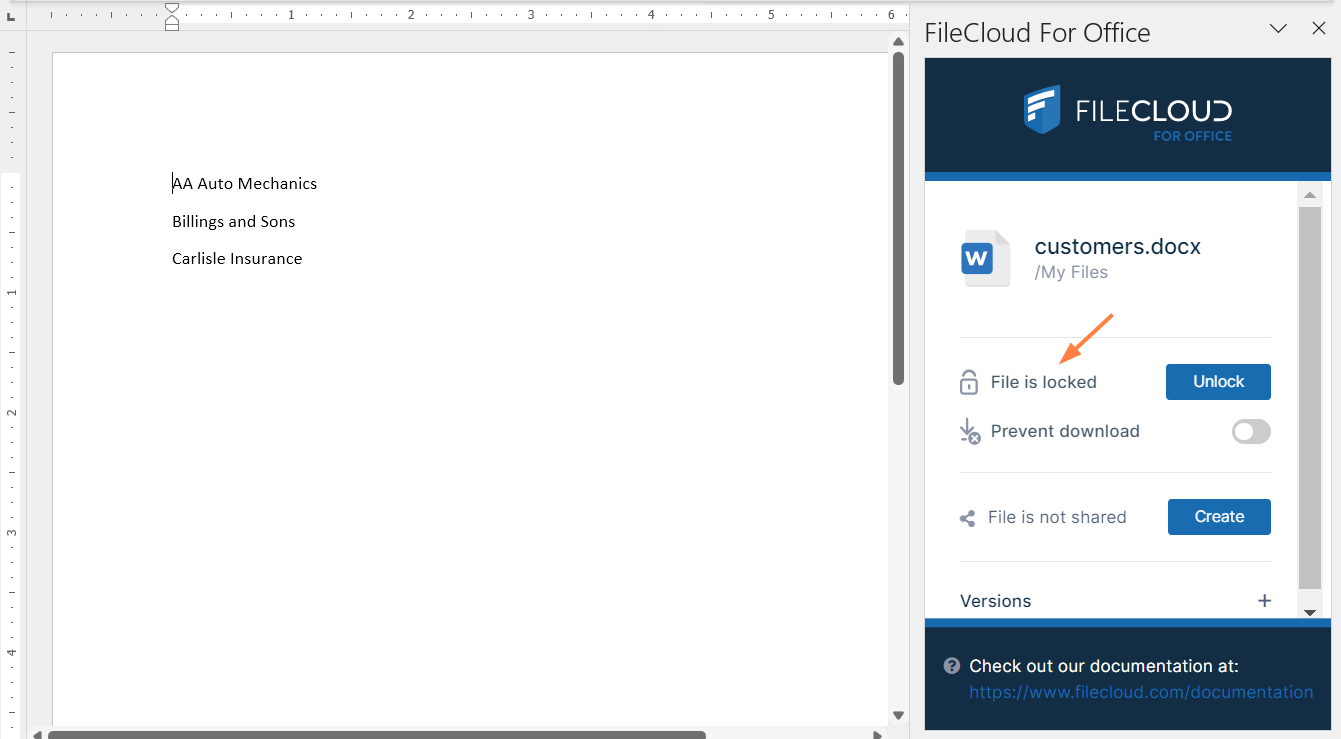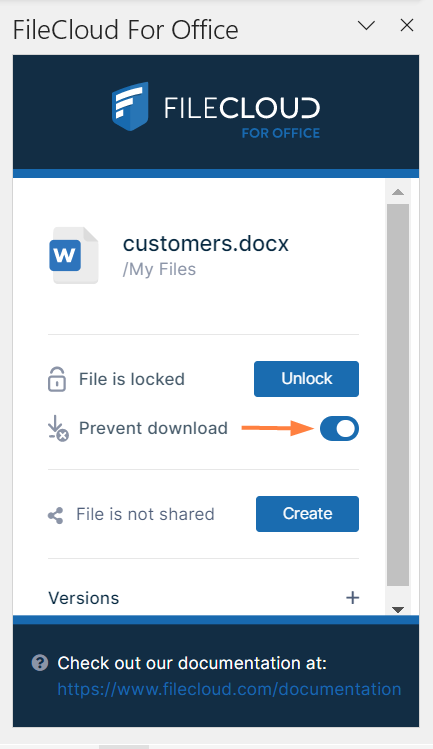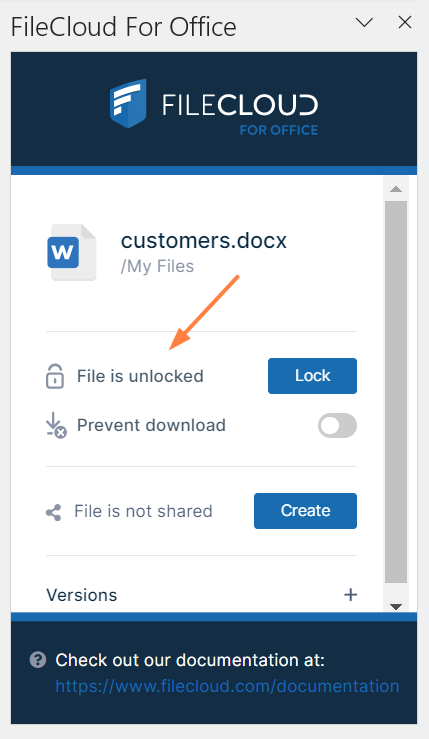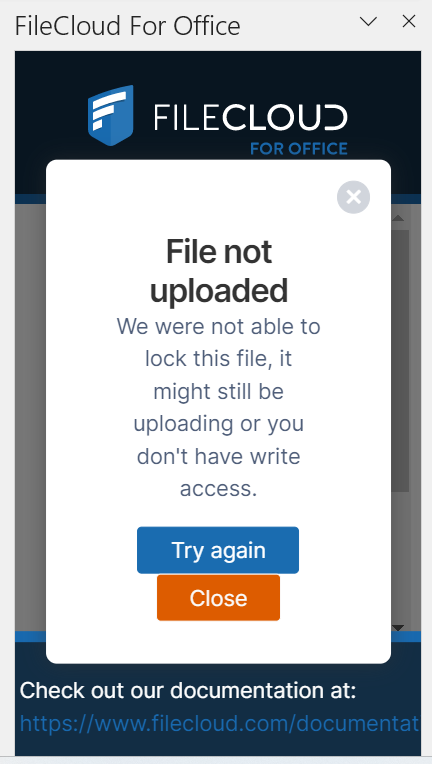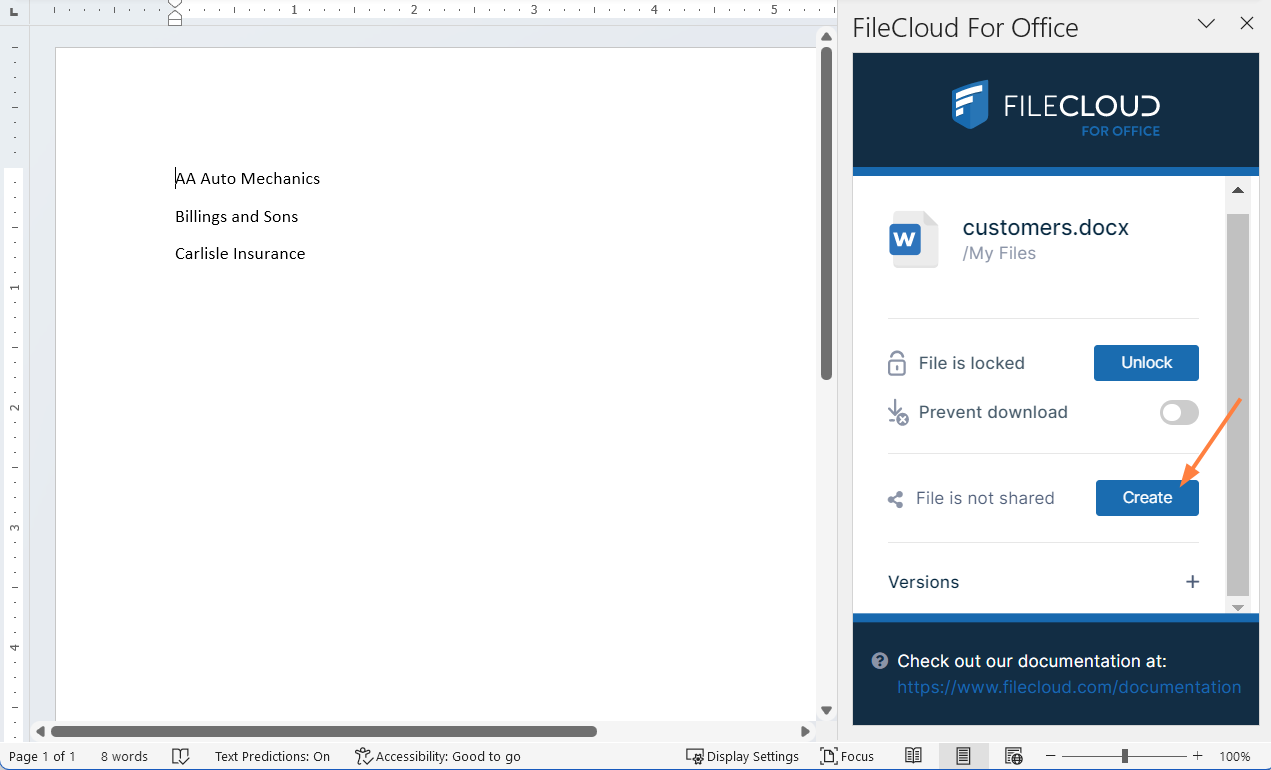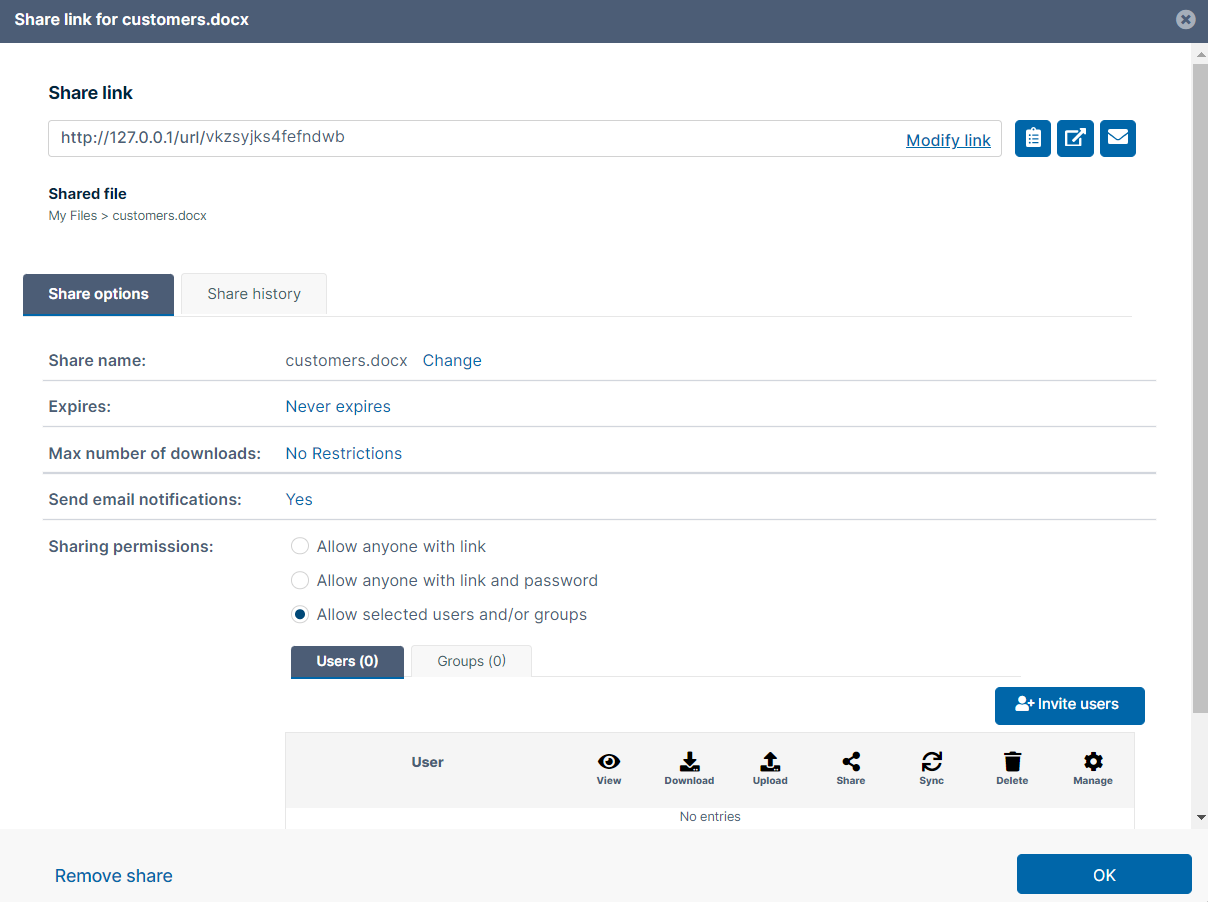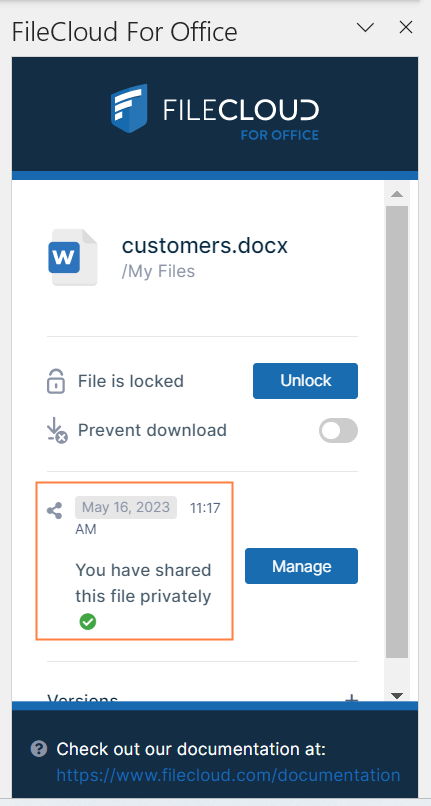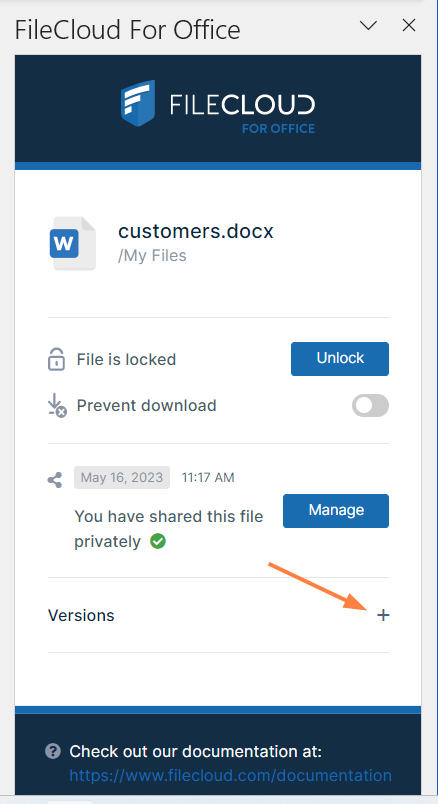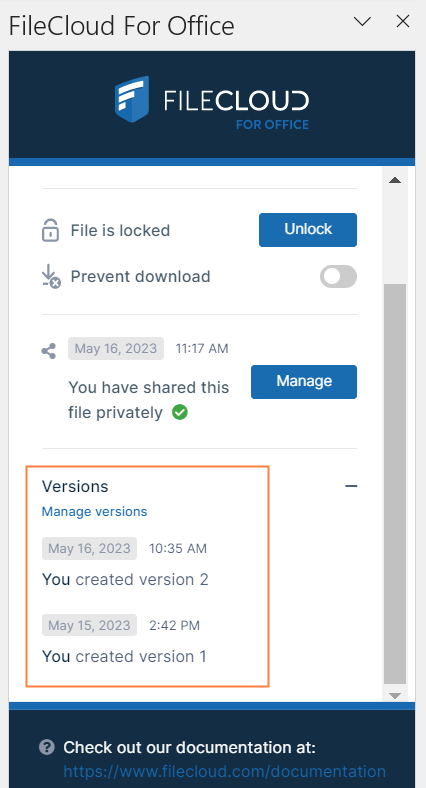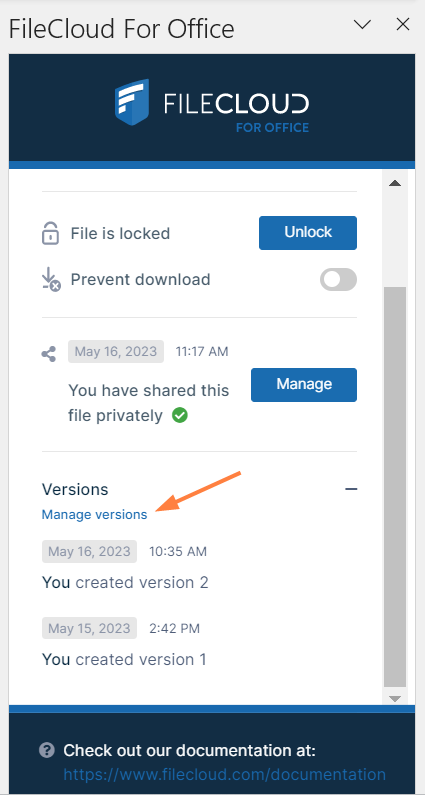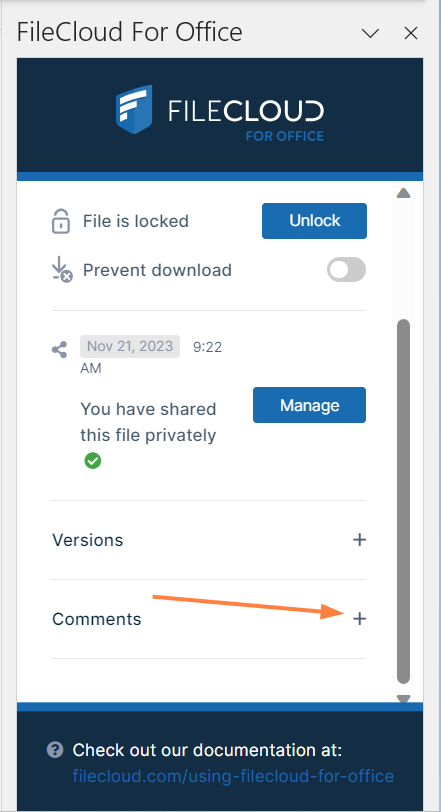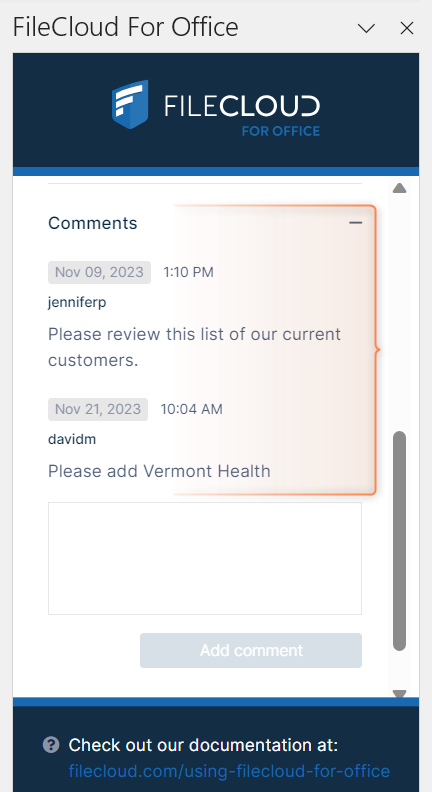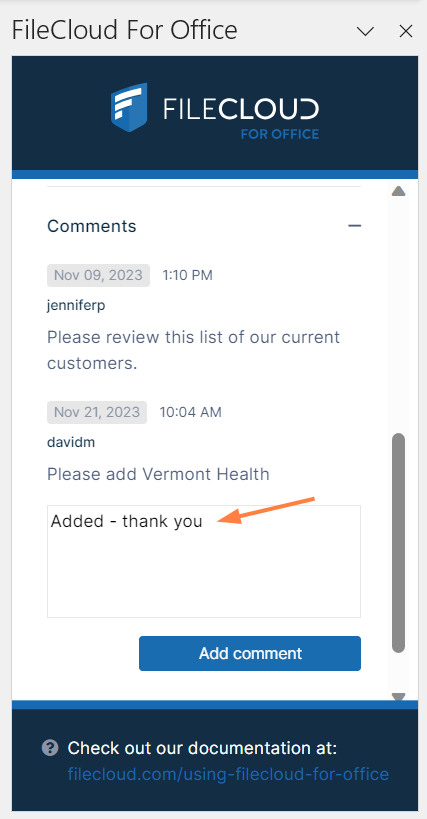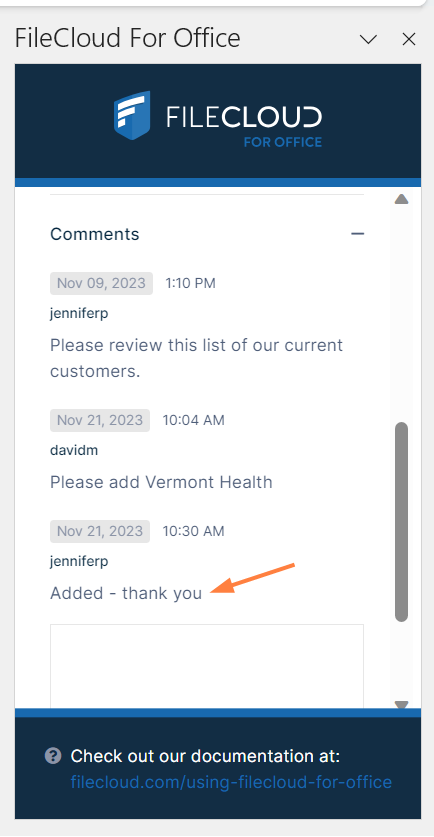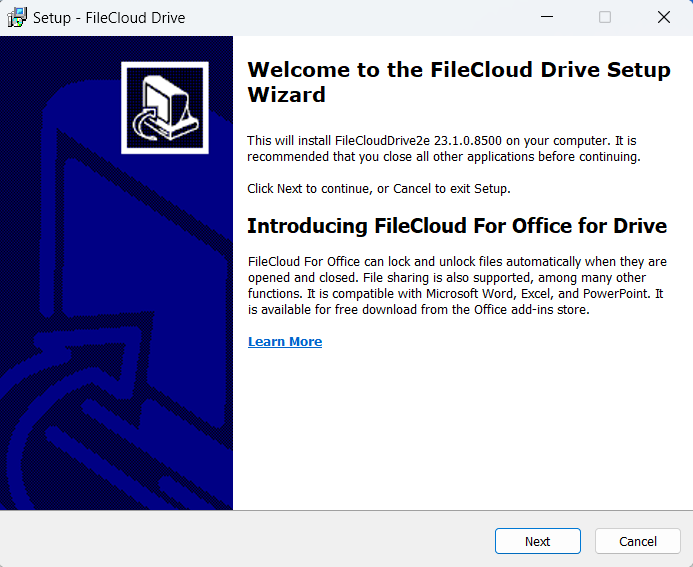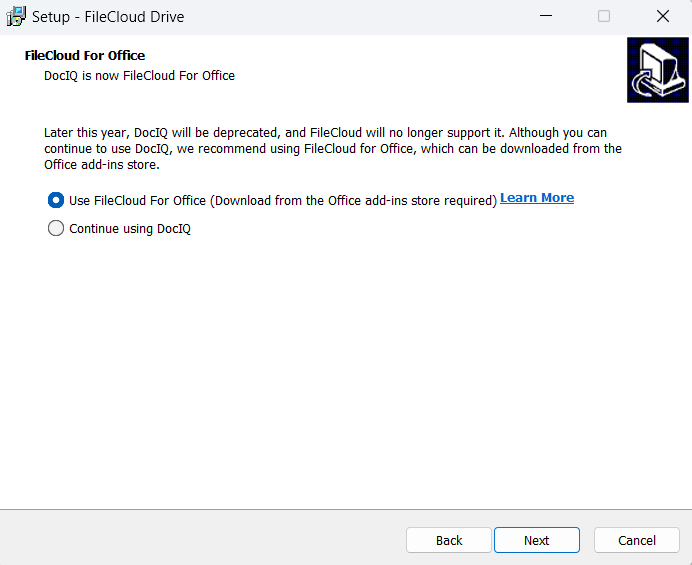Using FileCloud for Office with Drive
FileCloud for Office is an MS Office add-in for Word, Excel, and PowerPoint which can be used in both Windows and macOS with FileCloud Sync, FileCloud Drive, and FileCloud Desktop. It is available in FileCloud beginning with version 23.1.
For instructions on how to install FileCloud for Office, see Using FileCloud for Office.
If you have been using FileCloud Drive with DocIQ, see the instructions for previous users of DocIQ at the bottom of this page.
Before using FileCloud for Office with Drive
The first time you install Drive or upgrade Drive to use FileCloud for Office you must:
In your cloudconfig.php file, set your cookie same-site value to None.
For help, see Improving Cookie Security.- Confirm that you trust FileCloud for Office and enable it as shown in the following procedure.
To confirm that you trust FileCloud for Office and enable it:
- After you log in to FileCloud Drive, click the Settings tab.
- Click the Trust FFO button.
The Trust FFO button disappears, and Disable FFO Integration remains automatically turned off:
FileCloud for Office is now enabled in Drive, but to use it in Office files, you must attach the add-in to to each type of Office file (Word, Excel, and PowerPoint) in your FileCloud Drive directory.
Working with FileCloud for Office in Drive
The FileCloud for Office task panel displays information about a file and enables you to:
- Lock or unlock a file.
- Prevent or allow download of a file while locked.
- Share a file.
- Manage file versions, and view file details and metadata.
Lock or unlock a file
Share a file
Download versions, view details and metadata
FileCloud for Office log locations
View and add comments
For previous users of DocIQ
If you have never used FileCloud Drive with DocIQ before, the installer will automatically configure Drive for use with FileCloud for Office, and this section does not apply to you.
When you run the FileCloud Drive installer, the first screen of the wizard introduces you to FileCloud for Office:
If you have been using FileCloud Drive with DocIQ, the installer prompts you to choose whether you want to continue using DocIQ or switch to FileCloud for Office (DocIQ will be deprecated in the future).
Choose whether you want to use FileCloud for Office or DocIQ. If you choose FileCloud for Office, you are also required to install an add-in.
The installer configures your Drive installation to function with the option you have chosen.
